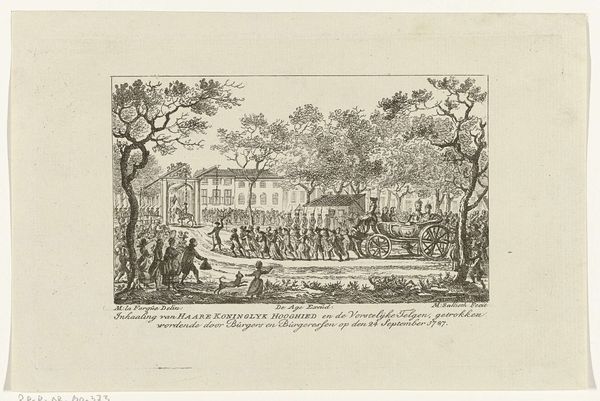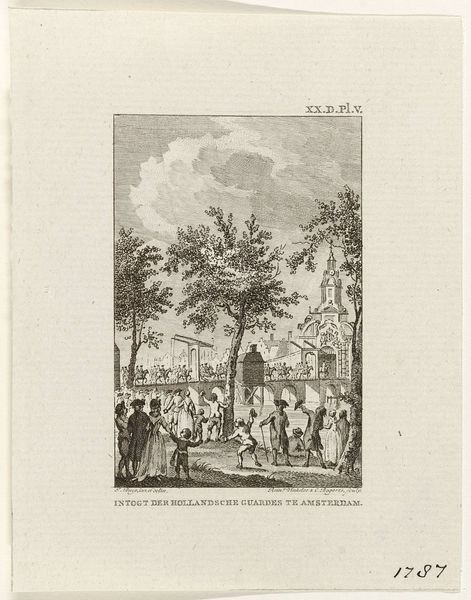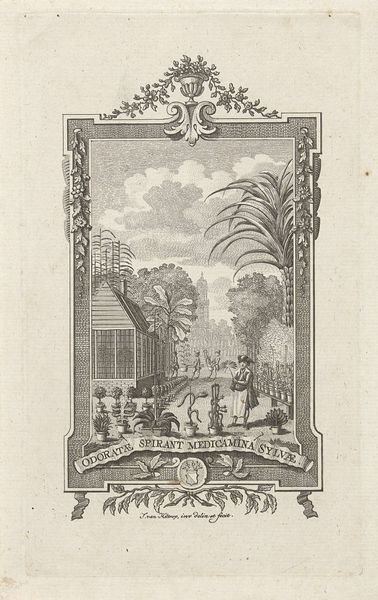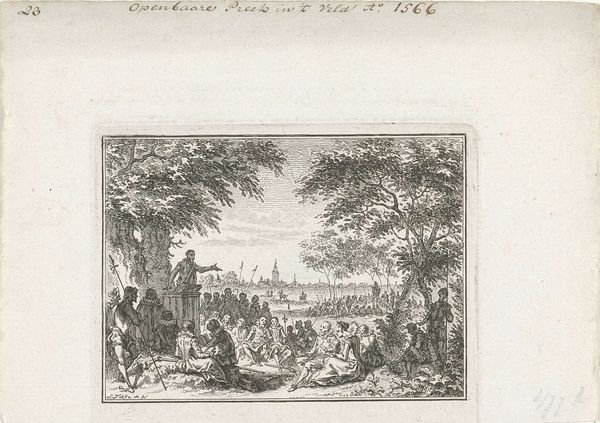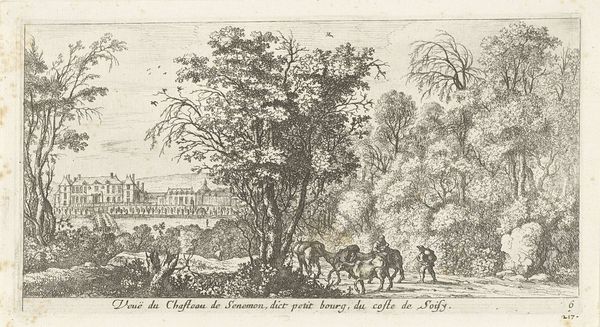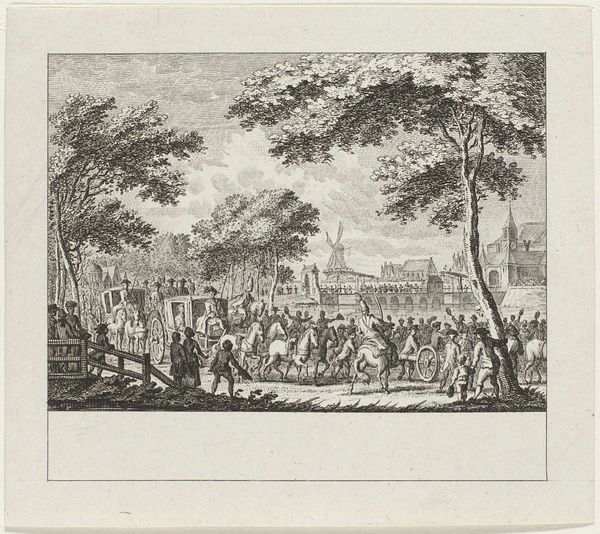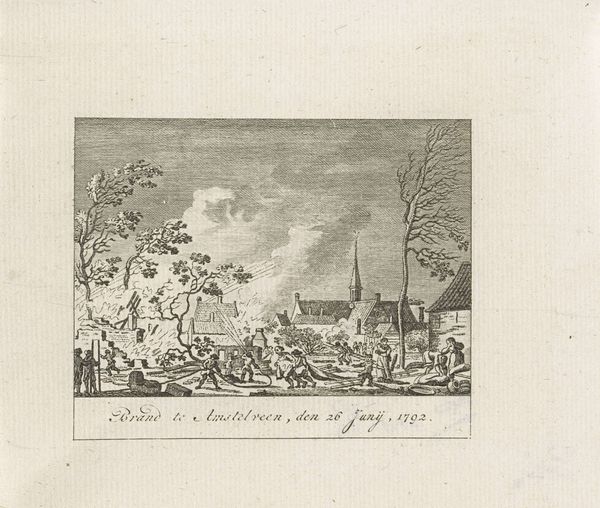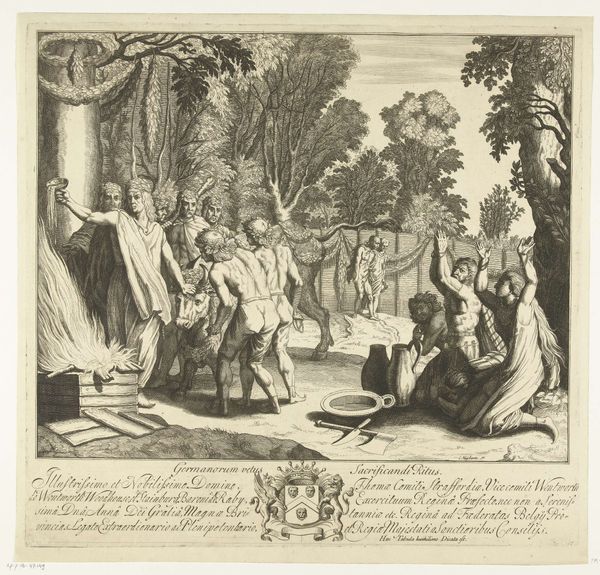
print, engraving
#
neoclassicism
# print
#
pen sketch
#
old engraving style
#
figuration
#
line
#
cityscape
#
genre-painting
#
history-painting
#
engraving
Dimensions: height 200 mm, width 285 mm
Copyright: Rijks Museum: Open Domain
Editor: This print, "Inhaling van de prinses van Oranje en de kinderen, 1787," is an engraving made in 1787. It looks quite detailed and rather… orderly. What do you see in this work? Curator: I see a tapestry woven with symbols of power, obligation, and social contract. Observe the figures pulling the Princess's cart. It's a literal representation of "dragging royalty," but what does that convey? Editor: It feels like... deference? They are literally hauling her along. Curator: Yes, but look closer. Are they willing participants, or are they compelled? What symbols suggest obligation versus willingness? The angle of their bodies, the repetition of their forms... They become part of the machine itself. It recalls the cultural memory of communal duty. What resonates from this cultural memory, though? Editor: Maybe that order, that rigid structure? It feels so… Neoclassical. Curator: Precisely! The Neoclassical style reinforces those ideas of civic virtue and duty. But the *choice* to depict it this way is where the message truly lies, embedding cultural ideas that royalty must fulfill, too. Editor: So, it’s about a push and pull – royalty and civic obligation linked? Curator: Precisely. Every element reinforces it, from the city-scape architecture in the background that demands order and symmetry, to those individuals. Editor: I didn’t think of the people as symbols but that gives the picture so much more weight. Curator: Art isn’t just visual appeal; it’s cultural memory made visible. This print is a clear illustration.
Comments
No comments
Be the first to comment and join the conversation on the ultimate creative platform.
